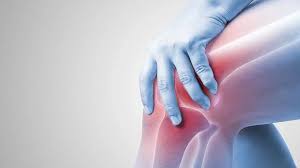Cartilage plays a key role in maintaining joint stability and function. When cartilage becomes unstable, it can create challenges that affect overall joint health. While instability itself isn’t classified as a direct cause of other joint conditions, its presence may contribute to mechanical imbalances or increased stress on joint structures. Here is more information on cartilage instability, its relationship with joint conditions, and the role of shoulder instability in understanding these connections:
Understanding Cartilage Instability
Cartilage instability refers to a situation where the cartilage in a joint cannot support or protect the bones effectively. This can lead to reduced stability during movement, including shoulder instability. Cartilage is a smooth, elastic tissue that cushions and protects the ends of bones in a joint, allowing for smooth motion. When cartilage becomes unstable through injury, degeneration, or wear and tear, it can cause abnormal joint mechanics.
This mechanical imbalance may place stress on surrounding structures, including ligaments, muscles, and tendons. Over time, this repeated strain can affect the joint’s overall health. Frequent instability can increase bone friction, potentially speeding up cartilage wear. This situation introduces a cycle of further instability and discomfort, particularly if left unaddressed.
Linking to Joint Conditions
Although cartilage instability isn’t directly linked to specific joint diseases, it can indirectly influence joint health. When a joint lacks stability, the uneven distribution of force during movement may set the stage for secondary issues. Instability could contribute to changes in alignment or function, leading to conditions that include:
- Joint Degeneration: Cartilage instability may accelerate joint wear, particularly in weight-bearing joints like the knees and hips. This process could increase the risk of degenerative conditions such as osteoarthritis. Instability and uneven pressure on the cartilage might lead to localized damage.
- Inflammation: The body’s response to instability often includes inflammation, particularly if the joint experiences repeated stress or misuse. This inflammation could impact the surrounding tissue, creating additional discomfort or stiffness during movement.
- Secondary Injuries: When cartilage instability affects joint mechanics, additional structures, like ligaments or tendons, may overstretch or tear. These secondary injuries could reduce functionality further and require medical intervention to restore mobility.
While these scenarios highlight potential outcomes, they do not directly confirm that cartilage instability alone will lead to these conditions. Factors like activity level, age, and genetic predisposition also play substantial roles in joint health.
Exploring Shoulder Instability
Shoulder instability serves as a useful example for understanding how joint instability can develop and potentially impact cartilage. The shoulder joint, a ball-and-socket structure, relies heavily on soft tissue for stability. When ligaments or cartilage in the shoulder become unstable, it can lead to a wide range of movement patterns that stress the joint.
Individuals experiencing shoulder instability may develop repetitive strain issues or abnormal loading within the joint. These changes can increase wear on the cartilage and lead to discomfort or limited mobility. Understanding how instability affects a finely balanced joint like the shoulder emphasizes why maintaining cartilage health and joint function is significant.
Find an Orthopedic Specialist
Cartilage instability presents a challenge to joint mechanics, potentially contributing to a cascade of effects on related structures. While it may not directly cause joint conditions, the mechanical imbalances it creates can lead to accelerated wear, inflammation, or secondary injuries. It’s helpful to stay informed about joint health, maintain physical activity within safe limits, and seek professional guidance if joint discomfort or mobility concerns arise. Understanding and addressing the roots of cartilage instability early can support better long-term outcomes for joint function.

Leave a Reply